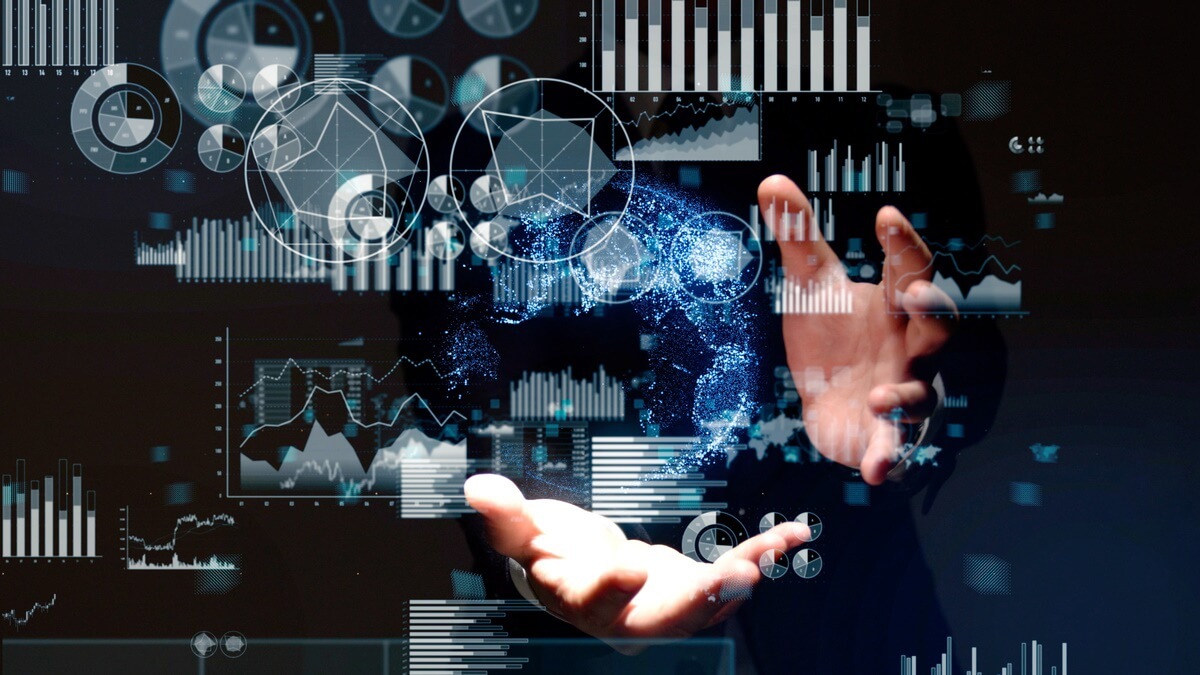Understanding Edge computing
Edge computing refers to a decentralized computing architecture where data processing and storage occur at the edge of the network, closer to the devices that generate the data.
Instead of sending data to a centralized data center or cloud, Edge computing allows data to be processed and analyzed locally, making it a cost-effective, efficient option for small and large businesses.
As our reliance on technology continues to grow, it has led to an exponential increase in data, resulting in network congestion and slow response times. However, using traditional cloud-based methods to resolve these issues can become even more costly for businesses.
By embracing Edge computing, businesses can process data more efficiently and effectively (without incurring high costs) and enjoy the speed and responsiveness required in today’s technology-driven world.
Edge computing explained
Edge computing is a decentralized approach that processes data closer to the source or end-user. The key benefits of Edge computing include reduced latency, decreased bandwidth usage, and reduced dependence on network connectivity, which leads to lower costs and real-time responses.
In Edge computing, data is stored and processed locally on a built-in or separate server. This helps alleviate data congestion by performing all or some processing locally and only sending the essential data to the central data center or cloud.
This reduces the strain on the network and allows for quicker analysis and response times.
Additionally, Edge computing enables the efficient processing and analysis of large amounts of data generated by IoT devices, improving their functionality and contributing to the growth of the IoT market.
With the increasing number of connected devices and the demand for real-time data processing, Edge computing has become a crucial aspect of modern computing systems, and its popularity is rising.
How is data processed in Edge computing?
Edge computing processes data closer to its source or end-user instead of transferring it to a distant data center.
This is where the problem begins – data has to travel a long way before it gets processed and stored.
Edge computing solves the problem by storing and processing data locally instead of sending it to the cloud. This reduces network usage and allows for much faster response times.
To fully understand Edge computing, it’s essential to explore its three key components:
1. Edge devices
Edge devices are the devices at the edge of the network that generate and collect data.
Examples include smart cameras, drones, industrial machines, and wearable devices.
These devices are equipped with various technologies to enable efficient data processing and storage at the Edge, including built-in storage, processing capabilities, connectivity options (e.g., Wi-Fi and Bluetooth), and Edge AI chips for advanced data processing tasks.
2. Edge networks
An Edge network is a type of network that provides connectivity and computing resources for Edge devices.
It’s designed to support data processing and storage at the Edge, near the source of data generation, rather than in a central data center or cloud.
The Edge network typically consists of multiple Edge devices that are connected to each other and the broader network through routers and other networking equipment.
The Edge network differs from a traditional cloud network in that it provides computing resources closer to the Edge, reducing the need for data to be transferred over long distances.
3. Edge infrastructure
Edge infrastructure refers to the hardware and software components supporting Edge computing, including Edge devices, networks, and other supporting systems.
The term encompasses physical components such as servers, storage devices, networking equipment, and the software and platforms that run on these.
Examples of Edge infrastructure include Edge data centers, gateway devices, and specialized Edge AI chips.
The role of Edge infrastructure is to provide the resources needed to support data processing and storage at the Edge, enabling real-time data analysis and decision-making.
What are the benefits of Edge computing?
Bringing processing and storage closer to the data source can offer a range of benefits, including lower latency, increased efficiency, and cost savings compared to traditional centralized computing approaches.
Now, let’s explore the key benefits of Edge computing in more detail:
Edge computing delivers high-quality performance
Edge computing eliminates the need for data transfer over long distances, leading to lower latency and faster processing times.
In addition to improving user experiences across the board, this feature makes Edge computing ideal for time-sensitive applications, such as security work and driverless vehicle use cases.
Additionally, Edge computing can help organizations achieve cost savings by reducing their dependence on central data centers.
Edge computing delivers high-quality performance by combining reduced latency, increased efficiency, cost savings, and real-time data processing, making it an attractive solution for many industries and applications.
Edge computing offers improved data security
Edge computing provides enhanced data security through local data storage and processing, which brings data closer to end-users. This reduces the risk of third-party interference and data sharing without user consent.
With Edge computing, data is stored locally, and access can only be granted with the explicit knowledge and consent of the user.
This approach aligns with privacy laws such as Europe’s General Data Protection Regulation (GDPR), which requires companies to obtain explicit consent from individuals for the use of their data (and grants individuals the right to access, modify, or delete their data whenever they choose).
Edge computing offers users greater control over their data. It lowers the risk of third-party interference, which aligns with the principles of the GDPR and helps organizations comply with privacy regulations.
Additionally, Edge computing minimizes the risk of data being hacked as less data is transferred over the internet to remote servers.
In hybrid Edge computing setups, only necessary data is sent to the cloud, while sensitive data remains stored on the Edge device, providing an extra layer of security.
Edge computing boosts scalability and flexibility
Edge computing enhances scalability and flexibility by bringing computing power closer to where it’s needed.
The decentralization of computing resources with Edge computing enables organizations to easily and quickly respond to changing demands and data processing needs.
This is because Edge computing allows for a more flexible infrastructure that can adapt to changing requirements, such as increased connected devices or data processing needs.
Edge computing allows for load balancing by distributing processing and storage resources across multiple Edge devices rather than relying on a central data center.
This ensures that computing resources are available and can be utilized where they’re needed most, enhancing the system’s overall performance.
Edge computing boosts scalability and flexibility by providing a decentralized and distributed computing infrastructure, enabling organizations to respond easily to their changing needs.
Edge computing enhances automation
Edge computing boosts automation by providing several key benefits, including:
- Latency reduction: By bringing computing power closer to the data source, Edge computing enables real-time processing, which is vital for automation applications requiring quick decision-making.
- Improved reliability: Edge computing processes data locally, minimizing the chances of connectivity failures and data loss that can occur when relying on remote data centers.
- Enhanced efficiency: Automation processes can be executed without the need for data transmission to a central location, resulting in faster and more efficient automation. This makes Edge computing a valuable tool in the manufacturing, healthcare, and transportation industries.
- Streamlined data deployment: Edge computing optimizes data analysis and deploys it to the appropriate endpoints. For instance, self-driving cars rely heavily on data from traffic lights, road conditions, and specific information about the vehicle, all of which can be optimized by Edge computing.
How does Edge computing work in the smart home?
In smart home use cases, Edge computing works by moving data processing closer to the source of the data, which are typically IoT devices.
Instead of sending all the data from these devices to a centralized server for processing and analysis, Edge computing enables devices to process and analyze the data locally.
This approach offers several advantages for smart homes.
As discussed, latency reductions are achieved by reducing the time it takes for data to travel to a centralized server and back. This results in a smoother, more responsive user experience in the smart home.
Edge computing paves the way for increased automation in smart homes, allowing for the seamless integration and automation of smart home devices such as lights, thermostats, security systems, and appliances.
With Edge computing, smart homes can run with greater autonomy, enabling new levels of convenience and comfort for their inhabitants.
Finally, Edge computing adds a layer of security to smart homes by providing real-time, accurate insights into what’s happening in the home (even when the user is away). This improved security helps to keep the smart home and its occupants safe.
As discussed, Edge computing in smart home use cases offers several benefits, including reduced latency, improved reliability, enhanced efficiency, increased automation, and improved security, making smart homes smarter, safer, and more convenient.
The future of Edge computing
In conclusion, Edge computing is a decentralized approach to data processing that brings computing resources closer to the source of data generation.
It’s quickly becoming the future of computing technology, and its current usage is expected to grow by 75% by 2025.
The widespread availability of Edge computing worldwide will bring about a new era of advanced technology for smart cities, homes, and vehicles.
As Edge computing continues to evolve and integrate with the Internet of Things (IoT) and 5G networks, it will unleash even more possibilities and bring about a smarter and more connected world.



